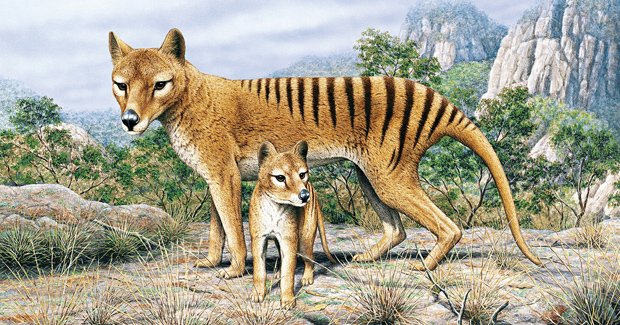More funding needed for thylacine genome

SCIENTISTS IN THE US working on sequencing the genome of the extinct Tasmanian tiger are being slowed by a lack of funding, they say.
Stephan Schuster and his team from Pennsylvania State University are following on from their genome work on the woolly mammoth, with the aim of completing the mitochondrial DNA sequencing of the extinct thylacine. The technique – where DNA samples are analysed and pieced together to build a complete genome – is performed much in the same way as the reconstruction of the woolly mammoth and Neanderthal genomes.
“We picked the thylacine as a worst-case scenario, a futile effort,” Stephan says. “It doesn’t have a close relative.” This research could provide insight into the evolutionary biology of the thylacine, a marsupial mammal, and perhaps even bring it back from extinction.
The last captive thylacine died in Tasmania’s Hobart Zoo in 1936 and the species is formally recognised as extinct – although many alleged sightings have been made. An unusual-looking creature with a pouch, striped flanks and strange jaw with a wide gape, the tiger has been a source of fascination and a challenge for scientists for decades.
Using a new approach, which ensures no damage to exhibits, Stephan and his team have increased their pool of samples to study with donations from museums around the world, he said. “You have to look back into the past to see what needs to be done in the future.”
Funding issues for Tasmanian tiger genome
Although the team has almost everything it would need in order to complete the genome, financial restrictions have slowed down research. “There are never any federal grants for this kind of research,” says Stephan. “And in this economic climate no-one is willing to pay for it.”
Australian zoologist Dr Andrew Pask, from the University of Connecticut, agrees with this sentiment. “Just because we have lost the animal does not mean we have lost the ability to study the uniqueness of its DNA,” he says.
A cloned thylacine could be a reality, says Andrew, though the task is not easy. “Even if we had the genome in hand, there are still a lot of steps required to recreate a whole living animal. This is still an awful way off, if it will ever be possible. I feel we have a moral debt to do all we can to bring this species back.”
Stephan is also working on the genome for the disease-plagued Tasmanian devils to help save them from extinction. “We would like to use the thylacine as an example of what humans have done wrong so they get behind the Tasmanian devil,” he says.
Historical footage of the last Tasmanian Tiger known to be alive. It died in 1936 and none have been seen since.

